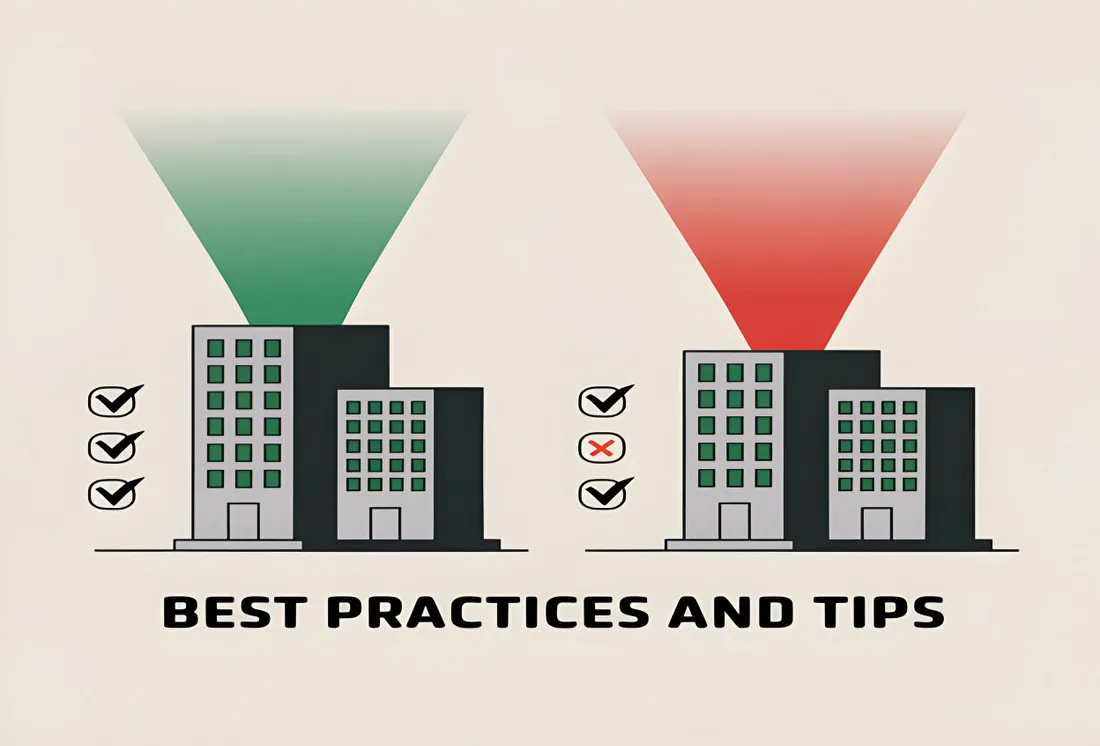Quick Guide to Build Verification Testing: Best Practices and Tips
 Alex Martin
Alex Martin
Imagine you’ve just finished building a new feature for your software application. Exciting, right? But before you jump into extensive testing, you need to ensure that the basic functions are working correctly. This is where Build Verification Testing (BVT) comes in. Think of BVT as your first line of defense, catching critical issues early and ensuring that your build is stable enough for deeper testing.
Build Verification Testing, sometimes called smoke testing, is a crucial step in the software development process. It saves time and resources by identifying major problems right at the beginning. If a build passes BVT, it means you can proceed with more confidence, knowing that the core functionalities are intact. If it doesn’t, it goes back to the developers for fixing, preventing unstable builds from moving forward.
In this guide, we’ll explore the best practices and tips for effective Build Verification Testing. Whether you’re new to BVT or looking to refine your process, these insights will help you enhance your testing strategy, improve product quality, and keep your development cycles running smoothly.
What is Build Verification Testing?
BVT is a subset of tests that focus on the core functionalities of the software application. It aims to verify whether the latest build is testable and stable before it proceeds to the detailed testing phases. This process helps in identifying any immediate defects that could hinder further testing, saving time and resources in the long run.
Process of Build Verification Testing (BVT)
Receive New Build: The BVT process initiates when a new build is delivered from the development team. This build contains recent changes or updates to the software application, such as new features, bug fixes, or performance improvements. The test team receives notification that the build is ready and available for testing.
Execute BVT Test Suite: The BVT test suite is a collection of automated tests designed to quickly verify the core functionalities of the application. These tests cover critical areas to ensure that the build is stable and that fundamental features work as expected. The test suite is executed against the new build, typically using continuous integration (CI) tools to automate this process.
Examine Results: After the BVT test suite is executed, the results are collected and analyzed. The test lead or manager reviews these results to identify any defects or issues that might have been introduced in the new build. This step is crucial for determining whether the build is stable enough to proceed with more exhaustive testing.
Speed up BVT testing With Your Personal AI Test Agent.
Try BotGauge Now!
BotGauge is a next-generation AI agent for software testing designed to revolutionize the testing landscape with its groundbreaking capabilities. At the forefront of our innovation is autonomous test case generation and live debugging, making BotGauge an industry leader in this space. It significantly reduces testing costs by 85% and accelerates the testing process, making it 20 times faster than traditional methods.
Benefits of BVT
Build Verification Testing (BVT) plays a crucial role in the software development lifecycle by ensuring that each new build is stable and ready for further testing. Here are some key benefits of BVT:
Early Detection of Defects: One of the primary advantages of BVT is the early detection of critical defects. By running a predefined set of test cases on each new build, teams can quickly identify major issues that could hinder further testing. This early detection helps in addressing problems promptly, saving valuable time and resources.
Time and Resource Efficiency: BVT helps in conserving the time and effort of the testing team. Ensuring that only stable builds are passed on for extensive testing, prevents the team from wasting time on builds that are not ready for thorough testing. This focus on stability enhances overall productivity and efficiency.
Immediate Feedback to Developers: When a build fails the BVT, immediate feedback is provided to the development team. This feedback loop is crucial for rapid bug fixing and continuous improvement. Developers can quickly diagnose and resolve issues, leading to faster turnaround times and more robust builds.
Streamlined Testing Process: Incorporating BVT into the development workflow streamlines the testing process. It establishes a clear, repeatable procedure for verifying new builds, ensuring that testing is systematic and consistent. This structured approach simplifies test management and enhances the reliability of the testing process.
Sample Test Cases for Build Verification Testing
To illustrate the application of BVT, here are some sample test cases:
Test Case 1: Application Launch
Objective: Verify that the application launches successfully.
Steps:
Install the latest build of the application.
Launch the application.
Verify that the application opens without errors.
- Expected Result:
- The application should launch successfully and display the main screen.
Test Case 2: User Login Functionality
Objective: Verify that users can log in with valid credentials.
Steps
Open the application.
Navigate to the login screen.
Enter a valid username and password.
Click the “Login” button.
Expected Result
- The user should be successfully logged in and directed to the dashboard.
Test Case 3: Basic Navigation
Objective: Verify that users can navigate through key sections of the application.
Steps
Log in to the application.
Navigate to the “Settings” section.
Navigate to the “Profile” section.
Expected Result
- The user should be able to navigate through these sections without any issues.
Test Case 4: Error Handling
Objective
- Verify that users can log out successfully.
Steps
Log in to the application.
Click the “Logout” button.
Expected Result
- The user should be logged out and redirected to the login screen.
For an in-depth guide on Build Verification Testing, check out this article: https://botgauge.com/blogs/Quick-Guide-to-Build-Verification-Testing
Challenges and Solutions
Frequent Changes in Requirements: Regular updates to the application can affect the BVT tests. Solution: Regularly update and maintain test cases.
Integration Issues: It might fail due to issues in integrating different modules. Solution: Include integration tests in the BVT suite and ensure proper communication between development teams.
Automation Maintenance: Maintaining automated tests can be challenging. Solution: Use reliable automation tools and frameworks that support easy maintenance and updates.
Best Practices for Build Verification Testing
Develop a BVT Plan: Outline the objectives, scope, and test coverage in a detailed plan to ensure all team members are aligned with the testing goals.
Define Clear Criteria: Establish clear entry and exit criteria for BVT, including conditions under which a build is accepted or rejected based on test outcomes.
Automate BVT Tests: Automation is crucial for BVT as it ensures quick and consistent execution of tests. Tools like BotGauge facilitate easy automation and maintenance of BVT test cases.
Focus on Core Functionalities: BVT should cover the critical functionalities of the application, such as user login, basic navigation, data input, and retrieval processes.
Keep Tests Short and Effective: BVT tests should be concise and executed within a short time frame (ideally 30 to 60 minutes) to provide quick feedback on the build’s stability.
Regular Updates and Maintenance: Regularly update test cases to reflect changes in the application. Remove outdated tests and add new ones as required to ensure relevance.
Detailed Logging: Maintain comprehensive logs for all test executions. This helps in diagnosing failures and understanding test outcomes for more effective debugging.
Include High-Risk Areas: Allocate more test cases to high-risk areas to thoroughly verify and mitigate potential risks, ensuring that the most vulnerable parts of the application are stable.
Integrate with CI/CD: Integrate BVT into your CI/CD pipeline to automate the testing process and ensure continuous feedback on build stability.
Monitor and Analyze Results: Regularly monitor test results and examine failures to identify recurring issues. This helps in improving the overall quality of the build by addressing the root causes of defects.
How to Perform Velocity Testing
Setting Up for Velocity Testing: Covers the preparation steps such as defining objectives, selecting scenarios, and configuring testing environments.
Choosing Metrics: Discusses the key performance indicators (KPIs) or metrics that will be measured during testing, such as response time, throughput, or resource utilization.
Selecting Right Tools: Explains the tools and technologies needed to conduct velocity testing, including both commercial and open-source options suitable for measuring web performance.
Executing Velocity Tests: Details the process of running tests, including setting up test scripts, initiating test runs, and ensuring proper monitoring during testing sessions.
Analyzing Velocity Test Results: Focuses on interpreting the data collected from velocity tests, identifying performance bottlenecks, and drawing actionable insights.
Iterating Based on Velocity Testing Insights: Emphasizes the importance of using test findings to make improvements, adjusting configurations, optimizing code, or scaling resources as necessary.
Common Mistakes and How to Avoid Them
Pitfalls to Watch Out For:
Over-reliance on manual testing.
Neglecting to update test cases with new features.
Failing to involve testers in the planning phase.
Solutions and Preventative Measures
Incorporate automated testing from the start.
Regularly review and update test cases.
Foster a collaborative environment between developers and testers.
Best Practices for Velocity Testing
Here are some best practices to ensure you get accurate and useful results:
Realistic Test Scenarios: Design tests that mirror real-world usage patterns, including various user actions and concurrent users.
Early Integration: Integrate testing early in development to identify and fix performance issues promptly.
Monitor Resource Usage: Analyze CPU, memory, and network usage to optimize system resources during tests.
Automation: Automate testing for consistency and integrate it into CI/CD pipelines.
Establish Baseline Performance: Set baseline metrics for key transactions to measure performance improvements or regressions.
User Interaction Simulation: Simulate user interactions like form submissions to accurately replicate real-world scenarios.
Comprehensive Documentation: Document test scenarios, methodologies, and results to aid understanding and collaboration.
Explore a comprehensive guide to Velocity Testing, including methods and best practices, in this article: https://botgauge.com/blogs/Quick-Guide-to-Build-Verification-Testing.
Conclusion
Build Verification Testing is an indispensable part of the software development lifecycle, ensuring that each new build is stable and ready for detailed testing. By automating it, focusing on core functionalities, and maintaining a robust testing framework, teams can significantly enhance their software quality and accelerate the development process. Implementing the best practices and tips outlined in this guide will help you achieve efficient and effective it, contributing to the success of your software projects.
Subscribe to my newsletter
Read articles from Alex Martin directly inside your inbox. Subscribe to the newsletter, and don't miss out.
Written by

Alex Martin
Alex Martin
Passionate about optimizing software testing processes, exploring innovative tools and strategies to improve efficiency and accessibility in testing workflows.